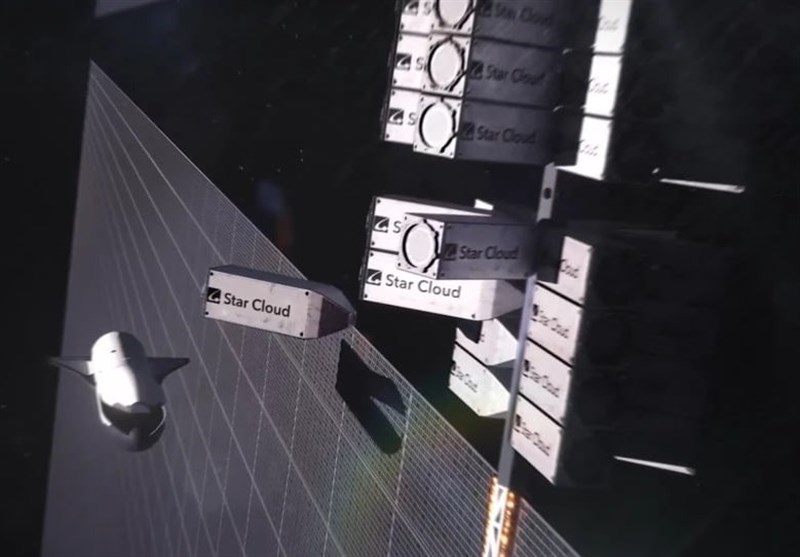Revolutionizing Data Storage: The Moon and Orbit Emerge as Game Changers in the Global Race
As the demand for data continues to surge, companies are exploring innovative solutions to address the challenges faced by Earth-based infrastructure. One such pioneer, Lonestar Data Holdings, is making headlines by proposing the revolutionary idea of establishing data centers in space, specifically on the Moon. This approach not only promises unparalleled data security but also aims to tackle the limitations posed by terrestrial data facilities.
Stephen Eisele, president of Florida-based Lonestar Data Holdings, emphasizes the immense potential of lunar data centers. “The way we see it is that by putting the data center in space, you’re really offering unparalleled security,” he stated. This concept is gaining traction, especially after Lonestar successfully tested a miniature data center that is approximately the size of a hardback book. The device was transported to the Moon aboard the Athena Lunar Lander, which was developed by US space exploration firm Intuitive Machines and launched via a SpaceX rocket.
Data centers, essential for housing servers and storage systems that power websites and digital services, are facing unprecedented demand. Lonestar’s Moon-based systems promise to deliver secure and reliable data processing, leveraging an abundant supply of solar energy. The idea of space-based data centers, once thought to be a concept of science fiction, is now becoming a reality as global data consumption skyrockets.
This surge in demand is largely attributed to the rapid growth of artificial intelligence (AI), significantly increasing the storage and processing requirements for data. According to a report by global consultancy McKinsey, annual data center demand is projected to grow between 19% and 22% by the year 2030. However, Earth’s data infrastructure expansion is constrained by several challenges:
- Space Limitations: Finding suitable land for new data centers has become increasingly difficult.
- Energy Usage: Traditional data centers consume vast amounts of electricity and water.
- Community Resistance: Local opposition often arises due to environmental concerns.
In contrast, space-based data centers could alleviate these issues by eliminating land-use conflicts and reducing environmental impacts. Moreover, they would benefit from unlimited solar energy and could serve spacecraft directly, enabling faster data transfers between orbital systems.
Last summer, the European Commission commissioned a feasibility study on orbital data centers, known as the Ascend report. Conducted by Thales Alenia Space, a joint venture between France’s Thales and Italy’s Leonardo, the study concluded that space-based data centers “could transform the European digital landscape” while providing a “more eco-friendly” alternative to ground-based solutions.
Thales Alenia Space has plans to build a constellation of 13 satellites, measuring 200m by 80m, with a processing capacity of around 10 megawatts (MW). This capacity is comparable to that of a mid-sized Earth-based data center, which typically houses around 5,000 servers. These satellites would be assembled in space, utilizing both current and emerging technologies.
Damien Dumestier, Ascend project architect at Thales Alenia Space, notes the importance of advancing rocket technology to make space-based data centers more environmentally friendly. He stated, “For space-based data centers to be more environmentally friendly… launchers need to become ten times less emissive over their lifecycle.” However, scaling up to 200MW capacity would require approximately 200 launches and significant investment.
Despite the optimistic outlook, experts caution that substantial challenges lie ahead. Dr. Domenico Vicinanza, an associate professor at Anglia Ruskin University, emphasizes the high cost of launching hardware into orbit. “Even with the contribution and advancements of companies like SpaceX, launching hardware into orbit remains extremely expensive,” he remarked. Each kilogram sent into space can cost thousands of dollars. Furthermore, space-based data centers require complex infrastructure for power, protection, and cooling, all of which contribute to increased weight and costs.
Cooling presents a particularly challenging issue, as traditional systems do not function effectively in zero gravity, despite the cold environment of space. Other concerns include risks associated with space weather and the growing threat of orbital debris. “Fixing problems in orbit is far from straightforward,” Dr. Vicinanza added. “Even with robotics and automation, there are limits… a major failure might require a costly human mission, resulting in extended downtime.”
Nonetheless, companies like Lonestar remain optimistic about the future of space-based data centers. “We wouldn’t be doing this if the customers weren’t asking us to,” said Lonestar’s Mr. Scott. The company aims to place a small data center in lunar orbit by 2027. Meanwhile, Washington-based firm Starcloud is preparing to launch its own satellite data center next month, with ambitions for commercial operations by mid-2026.
According to Eisele, space-based systems enhance data security by reducing reliance on terrestrial networks. “It’s like having the vaults at the back of the bank,” he explained. “You don’t have to open it every day, but it’s there to provide an extra measure of security… it’s that much harder to hack, that much harder to access.” Although data transmission from the Moon incurs a latency of about one and a half seconds, this delay is acceptable for functions such as backup storage.
Chris Stott, Lonestar’s founder and chief executive, highlights the compliance benefits of space data centers in relation to data sovereignty regulations. “Under space law, that box of electronics is literally under the law of the licensing or launching state – it is an actual embassy in space,” he stated. Lonestar has already secured clients, including the state of Florida and the Isle of Man government, further demonstrating the growing interest in this innovative approach to data storage.






